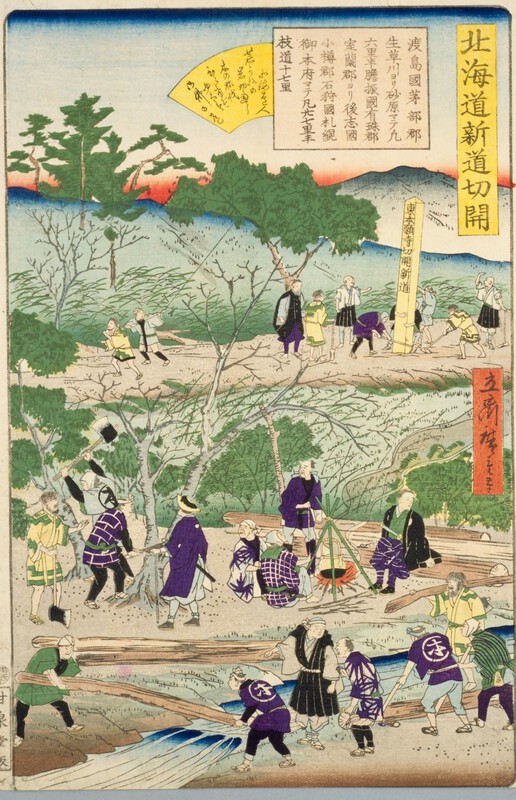Japan-U.S. Relations Prosper on Isolation
By Karel van Wolferen
There is nothing in the world that resembles the nichibei relationship. Yet, it is hard to think of two large industrialized countries that are so unlike each other as the United States and Japan. Except, recently, for one striking resemblance. If you had to choose one single word to typify their place in the world today, what more appropriate term would there be than “isolation”?
Applied to the United States this contradicts a lot of current belief. After all, the administration of George W. Bush is supposed to be engaged in a mission to spread democracy abroad. The intellectual roots of such a mission are usually traced back to Woodrow Wilson’s internationalist program, right after World War I. Wilson wanted to “make the world safe for democracy.” Historians normally contrast his idealism with policies of isolationism that the United States is believed regularly to adopt and discard again. But comparing the Bush administration to that of Wilson does not work at all; they do not resemble each other in any but rather superficial ways.
In fact, Bush or rather Vice Presi-dent Dick Cheney has forced the United States to act upon the world as an isolationist power; completely uninterested in the fate of other nations. It has withdrawn inside the hard shells of its military machines with which it hopes to change the world in such a way that the world can never challenge or bother the United States again. If you find this difficult to believe, just read the National Security Strategy report with which Condoleezza Rice amazed attentive readers in September 2002.
Now Japan. The country that unloads some 16 million travelers upon the world every year, on top of the millions of wonderful electronic and photographic gadgets, cars and whatnot, continues to be isolated to a degree that foreign observers find hard to believe.
Japan remains the world’s largest creditor. But strategically, politically and diplomatically Japan dwells in a hidden place where other countries rarely can find it. This is a luxury that has much to do with the earlier mentioned unique nichibei relationship.
Striking parallel
The reasons for Japanese and American isolationism are very different. The U.S. variety has been fostered by an American nationalism, which the world has not experienced before in such a virulent and extreme form. But if we zero in on the persons who are supposed to be at the center of the political webs in either country, we again face striking parallels.
The Bush people exist in a cocoon, something that has in recent weeks been confirmed by right-wing members of their own Republican party who have become horrified by it. Colin Powell’s right-hand man, Col. Larry Wilkerson, has belatedly described an utterly inept administration living on fantasy.
Gen. William Odom, former director of the National Security Agency, has characterized the biggest product of its fantasies–the invasion of Iraq–as “the greatest strategic disaster in U.S. history.” Brent Scowcroft, bestfriend of the first President Bush, has explained that there has been no way to talk reason with Condoleezza Rice, his successor as national security adviser.
Prime Minister Junichiro Koizumi does not at first sight appear to live in a cocoon. As a TV celebrity politician he seems to be in continuous touch with the Japanese public. But if we consider what kind of relationship he has with his counterparts in the rest of the world, beginning with Japan’s immediate neighbors, his own isolation is overwhelmingly obvious.
Koizumi’s cocoon is smaller than that of George W. Bush. It is an individual one, he carries it with him like a turtle in its shell. It is maintained for psychological reasons. I have been trying to figure out what makes him want to persist in a symbolic gesture that may be small in itself but that is understood everywhere as a taunt in the direction of China and Korea, and is believed to be very stupid by other Asians as well.
I think it is his way to show that he is steadfast. What other ways does he have to demonstrate his resolve? The reforms that the recent election was supposed to be about, both concerning the postal savings system and the internal make-up of the Liberal Democratic Party are, in truth, beyond his control. Foreign observers talk about his huge “political mandate,” but Koizumi does not appear to understand that a head of government has to shape such a thing, after receiving it from an electorate.
A big mistake
It is not only the Yasukuni Shrine visits that bear out Koizumi’s cocoon condition, but also the things he does not do. In a world that has of late become quite unstable, Japan’s position urgently requires imaginative diplomacy to create more productive neighborly relations.
Koizumi’s unneighborly conduct is a luxury that Japan’s elite takes for granted. And that is a mistake; one conveyed, ironically, by the criticism of Koizumi as “Bush’s poodle” or “lapdog.”
Pets are looked after; their relationship with their master assumes protection. American isolationism means unilateral action, no concern for others and no sense of mutuality.
The 60 years during which members of Japan’s political elite did not have to think about strategic matters have rendered them blind to the fact that isolationist America’s former allies, including Japan, are now no more than American vassals, facing huge new risks, without the earlier guarantee of protection.
The author is a Dutch-based journalist and author of The Enigma of Japanese Power: People and Politics in a Stateless Nation. This article appeared in IHT/Asahi: November 11, 2005). It is posted at Japan Focus on November 13, 2005.





